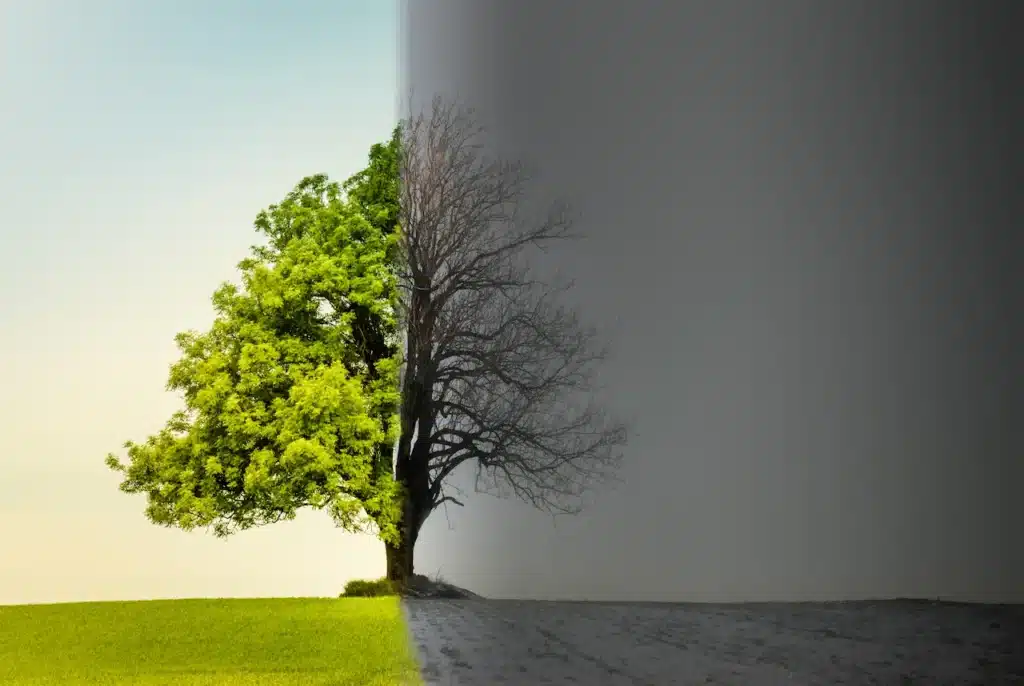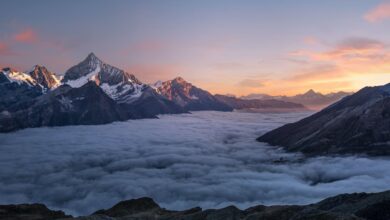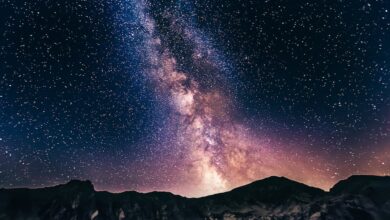One man’s life work is to pursue light and truth in a world of blurred boundaries and stories that unfold on every street, mountain pass and busy bazaar. He is Dominic Arizona Bonuccelli and has been travelling the world for more than two decades as both a traveller and visual storyteller. Dominic Arizona Bonuccelli, with a passport filled with stamps and a camera always at hand, has become one of the most distinctive photojournalists affiliated to Lonely Planet.
Bonuccelli has photographed not just places, but individuals. He has also captured not only landscapes, but life. This is the story about a man who doesn’t only take photos–he captures a spirit of the world.

Chasing The World Through A Viewfinder
Understanding Dominic Bonuccelli’s unique voice is understanding his deep connection to cinema. Dominic Bonuccelli, a graduate of the University of Southern California School of Cinema, approached the world as a filmmaker, with layers, arcs and characters. Every frame he creates is influenced by the cinematic eye that he developed at film school. Each photograph is more than just a snapshot; it’s an entire scene, complete with mood, narrative and rhythm.
Bonuccelli is not satisfied with just taking postcard-perfect photos of famous landmarks. He goes further. He has always focused on the people – their wrinkles, their laughs, and their cultural markings on their bodies. He captures the humanity of people in a raw, intimate way, whether he is photographing street dancers or fishermen in Vietnam.
His humanist approach makes his work a perfect fit for Lonely Planet – the leading publisher of travel guidebooks in the world. Dominic has been shooting on assignment for Lonely Planet for years. He ventures into remote villages, chaotic marketplaces, serene deserts and sacred spaces, to capture not just what travel looks like but also what it is like.
The Road Less Taken: From Cuba to Cambodia
Dominic’s journeys read like an itinerary from a bygone era. He has trekked across Cuba with a camera, capturing Havana’s soul and its crumbling colonial grandeur. He has captured the reverence of Buddhist Monks in Cambodia and the awe-inspiring ruins of Angkor Wat emerging from the jungle mist.
He stood on the shores of Kiribati – one of the most remote island countries in the world, which is now at the forefront of climate change. His work in the area brings attention to both the natural beauty of the island nation and the existential danger it faces with the rising sea levels.
Dominic photographed one of the world’s most spiritually and politically sensitive areas, Tibet. His photographs from the Himalayan Plateau reflect both the serenity and weight of Tibetan life.
He immerses himself in the environment, waits and listens. He develops relationships with people he photographs, usually through gestures and broken language. His portraits reflect this intimacy, as his subjects are never seen as “others”, but rather as equals who share their world in dignity and grace.
Published and Awarded
Dominic’s unique style and evocative images have earned him a spot in some of the world’s most prestigious stock photo agencies. His photos are represented by Lonely Planet Images, Age Fotostock, in Spain and Getty Images, in the United States.
His editorial work, which has been published in major publications like Variety, Forbes and The Wall Street Journal, is a testament to his versatility, as well as his ability to frame economics, culture and politics using visual storytelling.
Bonuccelli’s work is a standout in an industry that is often saturated with overly-processed photos and superficial aesthetics. Its authenticity makes it unique. Bonuccelli’s photos are colourful but not over-exaggerated. They are composed but not staged. And they have an emotional quality without being intrusive. The photos invite you to stand right next to him and experience the same emotions he did, whether it is the chaos of a street market in India or the quiet of the Mongolian steppe.
The Sonoran Desert
Dominic, despite his world-trotting lifestyle, calls Tucson home. It’s a place as beautiful as any other he has photographed. Sonoran Desert’s dramatic sunsets and blend of Native American, Mexican and American cultures provide a contrast to the transient nature that travel can bring.
Bonuccelli has time in Tucson to reflect, curate and plan his next adventures. In keeping with his restless spirit, even “home” is transformed into a canvas. His work in Tucson continues to explore stories, particularly those rooted in culture and community.
He is also a regular at Dia de los Muertos events, where he captures grief and celebration as well as ancestry, identity and ancestry. One of his projects at the moment is a Taschen coffee table book devoted to Tucson’s Dia De Los Muertos Festival. It’s an incredibly personal project, with a combination of rich colour, reverence for culture, and an eye to the surreal beauty found in tradition.

Four Projects and One Passion
Bonuccelli’s ability to manage multiple projects is a testimony to his creativity. At the moment, Bonuccelli is working on four different but equally exciting projects.
- A Book of Environmental Portraits from the Dominican Republic
Dominic uses environmental portraiture in this series to tell the stories of everyday Dominican Republic people. These images, whether they’re of a sugarcane farmer or a street performer bathed in Caribbean sunlight, aim to highlight the beauty that is often overlooked in everyday life. - A Children’s Book of Monsters
Bonuccelli, who is known for his whimsical style, has also created a book for children that brings to life monsters – charming, quirky and strangely endearing creatures that will entertain and teach young readers empathy, diversity and imagination. - A Coffee Table Book about Seattle’s Teatro Zinzanni
Seattle’s eclectic cabaret theatre, Teatro Zinzanni, is known for its flamboyant costumes, circus acts and theatrical dining. Bonuccelli’s images of the behind-the-scenes world, including makeup rooms, costume racks and performers warming up, offer a rare look into this surreal, glamorous world. - Taschen Tucson’s Dia de los Muertos
This book, as mentioned above, explores one of America’s most visually stunning and powerful cultural events. Dominic’s mix of reverence, artistry and life is captured in this celebration of both life and death.
Bonuccelli has a wide range of talents, but all projects share one thing in common: an appreciation for culture, love for storytelling and a commitment to authenticity.
What makes Dominic Bonuccelli different
Many photographers travel. is less visible. Even fewer understand. Dominic Bonuccelli does not just pass through places; he enters with curiosity and respect. He does not photograph people to dehumanise them but to preserve their dignity.
Dominic is a travel photographer who finds beauty in the subtle. He captures the quiet gaze of a grandmother, or a child dancing in a street flooded with water. His photographs remind us that life is more than monuments and vistas. It’s about moments, gestures, connections.
He lives on the edge of art and activism. Dominic’s photos raise awareness of issues such as environmental degradation, cultural conservation, and migration. Not by preaching but by showing the people who are affected.
A true citizen of the world
Dominic Bonuccelli, in an age when we can “visit”, anywhere with just a few swipes of our phones, reminds us that real travel isn’t ticking off destinations but listening. It’s all about taking the time to linger long enough to truly understand, feel and connect. His work encourages us to be slower, more mindful, and to look for the human stories hidden behind the postcard.
His images in Lonely Planet have inspired millions to look beyond the brochures and explore the soul of places. In his editorial work and personal projects, he challenges how we see “the other”, replacing distance with empathy.
Dominic Arizona Bonuccelli doesn’t just document the world; he builds a visual record at each frame of its soul.

In His Own Words (A Final Thought)
Dominic’s work is largely self-explanatory, but in interviews he emphasises one core belief that has defined his journey.
The camera is my way of saying thank you. I use the camera to say thank you .”
Maybe that’s why his work feels so personal and resonant. Each photo is a present, not only to the viewer but also to the subject, culture and the moment.
Lonely Planet Through His Eyes
Dominic Bonuccelli’s Lonely Planet is a unique, fascinating world that contains many untold tales.
Through his lens we see that it is not divided by borders but united by beauty, spirit, and struggle.
One thing is for sure: wherever he goes, the world will watch him–through his own eyes.




